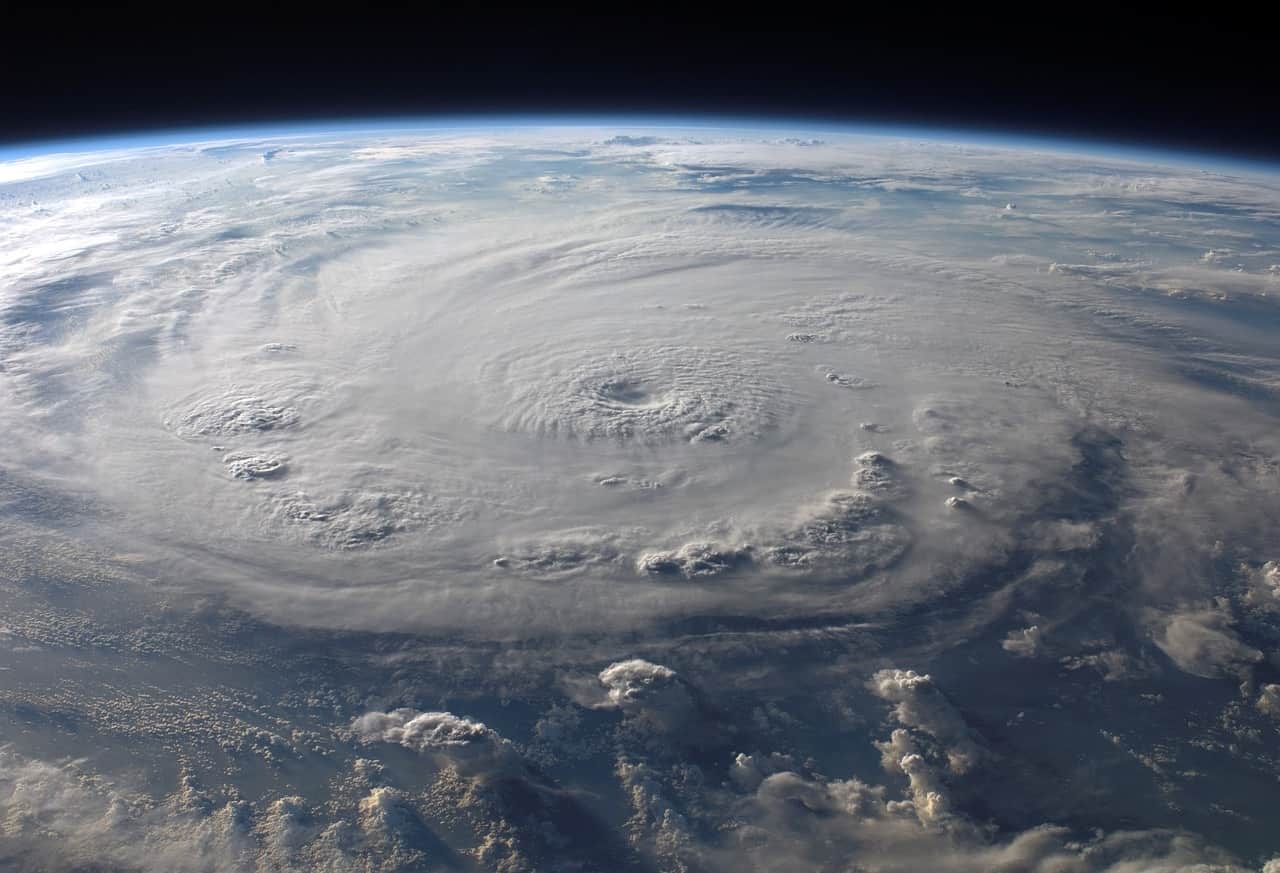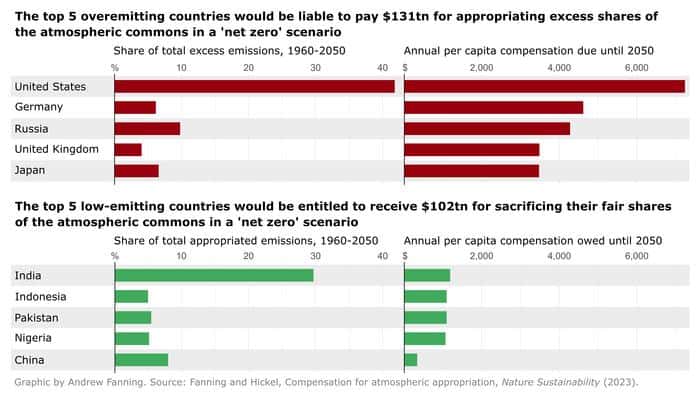
Climate change is a global challenge that requires urgent action from all nations. However, not all countries have contributed equally to the problem.
Industrialized nations, known as the Global North, have historically been responsible for excessive levels of carbon dioxide (CO2) emissions, while low-emitting countries in the Global South struggle to meet their climate targets. For instance, although China is today the largest CO2 emitter, responsible for 30% of current emissions, across history the United States has emitted twice as much greenhouse gas as China.
A recent study, led by researchers at the University of Leeds, reveals that the Global North may be liable for a staggering $170 trillion in compensation or reparations by 2050 to address this inequality.
Closing the gap: fairness in climate action
The proposed compensation scheme aims to distribute funds equitably among nations, enabling low-emitting countries to accelerate their transition to sustainable economies. This financial redress acknowledges the losses and damages incurred by climate-vulnerable countries due to the excessive CO2 emissions of others.
It marks an important step toward climate justice, emphasizing that countries historically responsible for high emissions should be held accountable and contribute to the solution.
The scheme involves a comprehensive framework for determining the liabilities and entitlements of nations regarding excessive CO2 emissions.
The underlying principle of this compensation system is that the atmosphere is a shared resource, to be used sustainably and equitably by all. The researchers calculated each country’s fair share allocation based on its population size and the remaining carbon budget estimated by the Intergovernmental Panel on Climate Change (IPCC), comparing it to the carbon emissions released historically and projected until 2050. The researchers considered an ambitious scenario where all the 168 countries involved in the study decarbonize from current levels to ‘net zero’.
These carbon budgets indicate the amount of carbon emissions that can be released to achieve specific climate targets, such as limiting global warming to 1.5 degrees Celsius. The total carbon budget from 1960 onwards was determined to be 1.8 trillion tons of CO2.
Some countries, such as the UK and the US, have significantly surpassed their fair share, while others, like India, have stayed well below. By applying carbon prices from leading climate scenarios, the study estimates that the Global North would be liable for 89% of the total compensation amount. This amounts to a staggering $170 trillion.

According to the study, the UK could face a liability of $7.7 trillion for excessive CO2 emissions until 2050, equivalent to nearly $3,500 per capita annually. Meanwhile, the US could be liable for a staggering $80 trillion, amounting to over $7,200 per capita annually. On the other hand, India, historically a low carbon emitter, could be entitled to receive compensation of $57 trillion, or approximately $1,200 per capita annually until 2050.
The burden of responsibility
Dr. Andrew Fanning, the lead researcher, highlights the need for urgent action to combat climate change. While all countries must decarbonize their economies, it is crucial to acknowledge the disproportionate burden faced by low-emitting nations that bear no responsibility for the excess emissions destabilizing our climate.
“It is a matter of climate justice that they should be compensated for this unfair burden,” Dr. Fanning states.
The issue of climate justice has gained increasing recognition in international climate change negotiations. The new study presents a compelling case for compensating low-emitting countries affected by excessive CO2 emissions.
“Our study focuses only on compensation that is owed for atmospheric appropriation, and this should be considered additional to broader questions about the costs of transition, adaptation and damages,” said Professor Jason Hickel, from the Institute of Environmental Science and Technology of the Autonomous University of Barcelona (ICTA-UAB) and co-author of the study.
“We must also pay attention to large class inequalities within nations. Responsibility for excess emissions is largely held by the wealthy classes who have very high consumption and who wield disproportionate power over production and national policy. They are the ones who must bear the costs of compensation.”
By addressing historical imbalances and ensuring equitable compensation, the idea is to move closer to a fair and sustainable global response to climate change.
However, is not lost on anyone that the sums involved here are mind-bogglingly astronomical. Political support in rich countries from the global North is unlikely to justify more than a fraction of the discussed compensation.
However, it is not lost on anyone that the sums involved here are mind-bogglingly astronomical. Political support in rich countries from the global North is unlikely to justify more than a fraction of the discussed compensation.
To provide transparency and enable public engagement, the researchers have developed an interactive website where individuals can explore which countries could be entitled to compensation and how much, as well as which countries might be liable to pay. This user-friendly platform allows for a deeper understanding of the implications and encourages global participation in the discussion on climate justice. You can access the website here.
The new findings appeared in the journal Nature.









